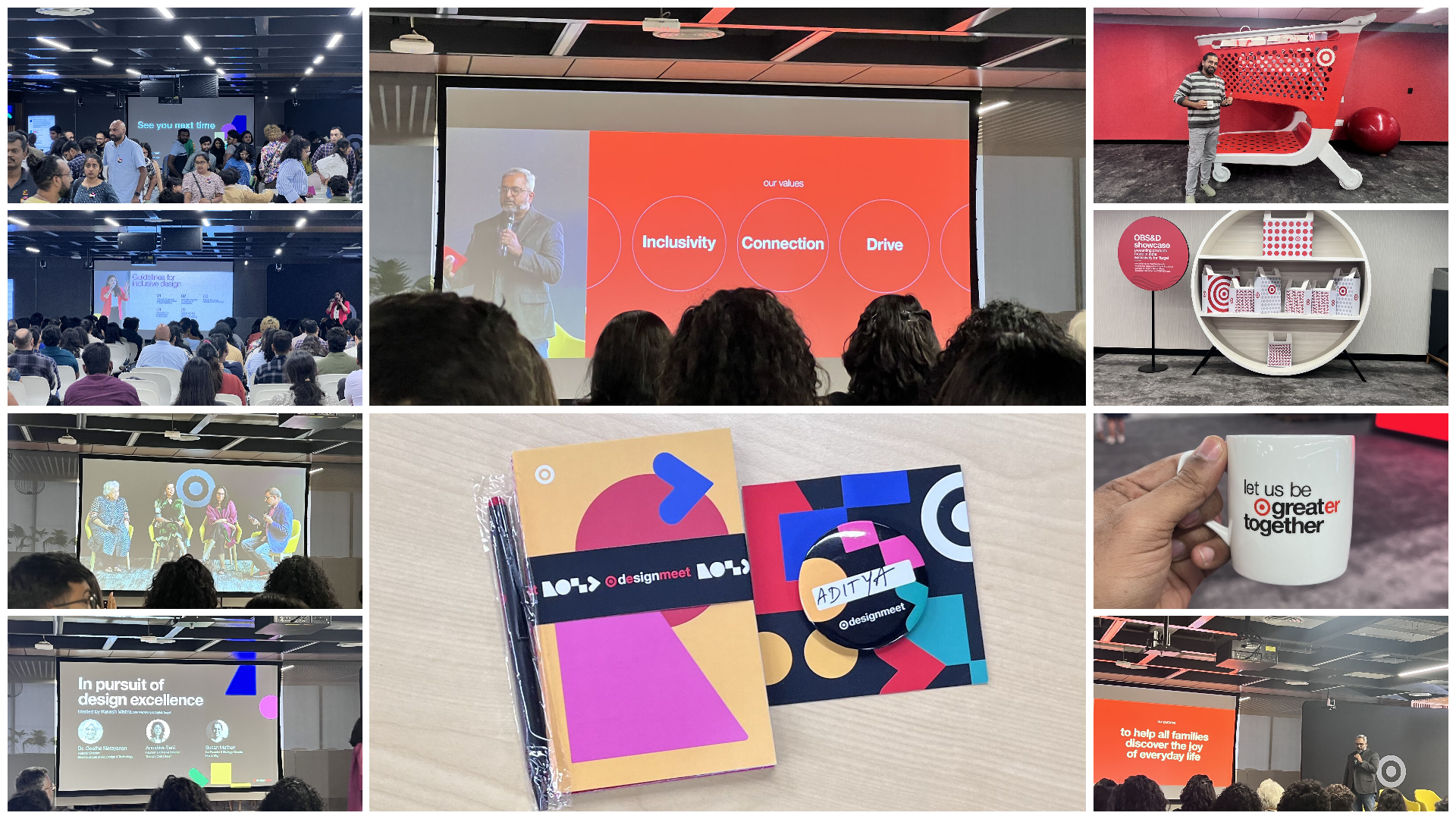As a design leader, sharing insights from significant events like the Target Design Meet can provide valuable knowledge and inspiration to the broader design community. The recent Target Design Meet, themed “Holistic Design that Drives Business,” offered a wealth of information on achieving design excellence through inclusive design, retail marketing, and brand building at scale. Here are the detailed takeaways from this insightful event:
1. Tarzhay: The Magic of Target
Speaker: Prashant Chandrashekar, Director of CGI/3D
Key Insights: Prashant took the audience on a journey through the history of Target, highlighting the brand’s evolution and the immense value it has brought to the world. He emphasized how Target has consistently used innovative design and CGI/3D techniques to create a unique and engaging brand identity. These efforts have not only enhanced the visual appeal of Target but also strengthened its connection with customers.
Takeaway: Understanding the historical context and the strategic use of design can significantly contribute to building a brand that resonates with people on a deeper level.
2. Crafting Branding at Target
Speaker: Swetha Mohare, Creative Director at Brand Design Lab, Target
Key Insights: Swetha provided an in-depth look at the meticulous branding strategies employed at Target. She discussed how a cohesive brand identity is crafted through careful design choices and consistent messaging. By focusing on the details that matter to customers, Target has managed to create memorable experiences that drive brand loyalty.
Takeaway: Cohesive branding is crucial for creating lasting customer relationships. Every design element should work together to tell a consistent and compelling brand story.
3. Panel Discussion: In Pursuit of Design Excellence
Host: Rakesh Mishra, SVP Marketing and Digital, Target
Panelists:
- Dr. Geetha Narayanan, Founder Director, Srishti Institute of Art, Design and Technology
- Anushka Saini, Founder & Creative Director, Thought Over Design
- Susan Mathen, Co-founder and Strategy Director, Hue & Why
Key Insights: The panel discussion explored various dimensions of design excellence, focusing on innovation, sustainability, and cross-disciplinary collaboration. Each panelist shared their unique perspective on what it takes to achieve excellence in design and how thoughtful, innovative approaches can solve complex problems and drive business success.
Takeaway: Design excellence is a multifaceted goal that requires innovation, sustainability, and collaboration across different disciplines. Engaging with diverse perspectives can lead to richer, more effective design solutions.
4. Inclusive Design at Target
Speaker: Sneha Stephen, Creative Leader – Retail Marketing
Key Insights: Sneha highlighted the importance of inclusive design in creating shopping experiences that are accessible and equitable for all customers. She shared strategies for integrating inclusivity into Target’s retail marketing efforts, ensuring that all customers feel valued and represented.
Takeaway: Inclusive design is not just a moral imperative but also a business strategy that can lead to broader market appeal and increased customer loyalty. Designing with inclusivity in mind ensures that all users have a positive experience.
5. Brands at Scale
Key Insights: This session focused on the challenges and strategies for building and maintaining brand consistency across diverse markets and platforms. It highlighted the importance of scalable design systems in achieving global brand recognition.
Takeaway: Scaling a brand requires consistent design systems that can be adapted to various markets without losing the core brand identity. This consistency helps in building a recognizable and trusted brand worldwide.
6. Driving Relevancy for Retail Media
Key Insights: The discussion centered on how retail media can be leveraged to enhance customer engagement and drive sales. It emphasized the role of data-driven insights in creating relevant and impactful marketing campaigns.
Takeaway: Utilizing data-driven insights can help in crafting marketing campaigns that are not only relevant but also highly effective in engaging customers and driving business outcomes.
Networking Opportunity
The event concluded with a high tea and networking session, providing attendees with the opportunity to connect, share ideas, and foster collaborations.
Takeaway: Networking is a vital component of professional growth. Engaging with peers and industry leaders can lead to new ideas, partnerships, and opportunities.
[modula id=”195″]
Conclusion
The Target Design Meet underscored Target’s commitment to design excellence, innovation, and inclusivity. It showcased how thoughtful design, when aligned with business goals, can drive significant success. As design leaders, it’s essential to incorporate these insights into our practice, continually striving to create designs that are not only functional but also meaningful and inclusive.













